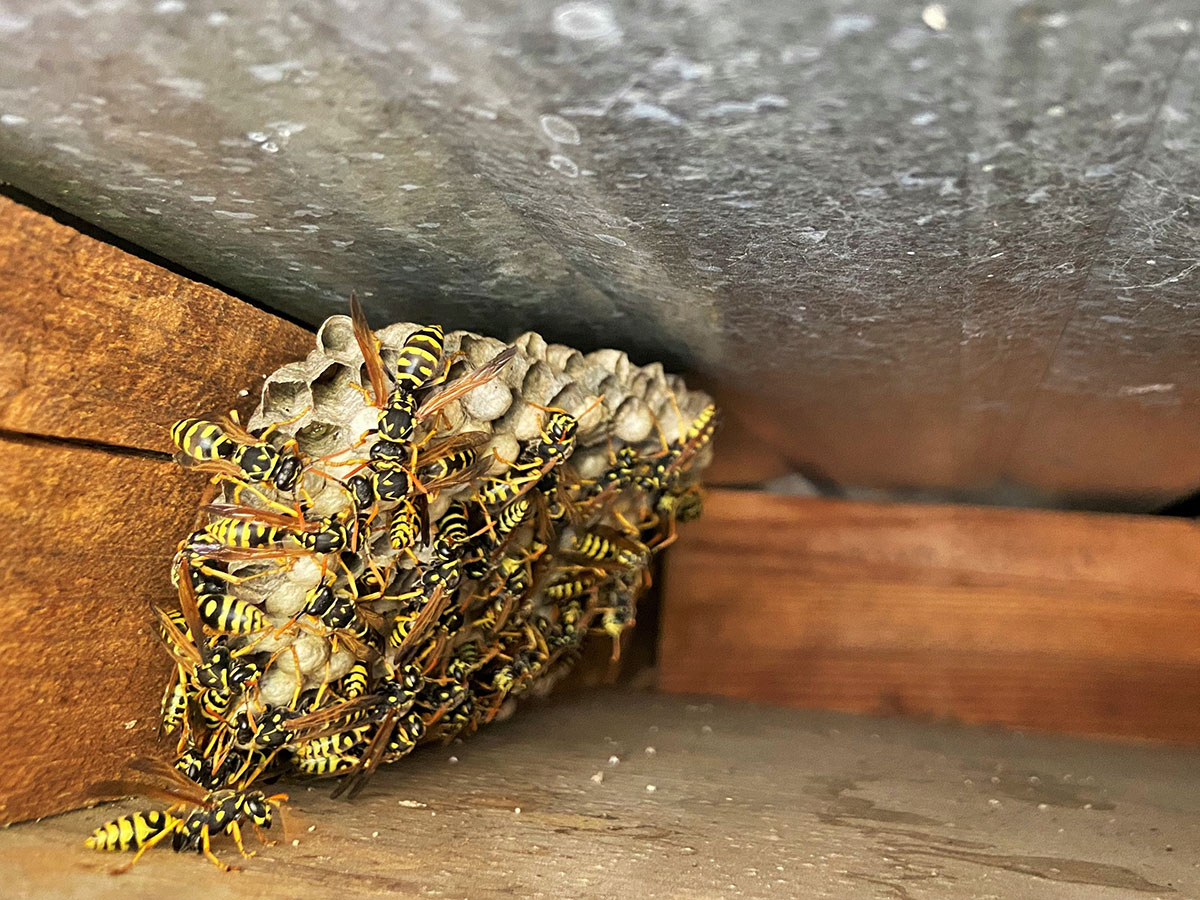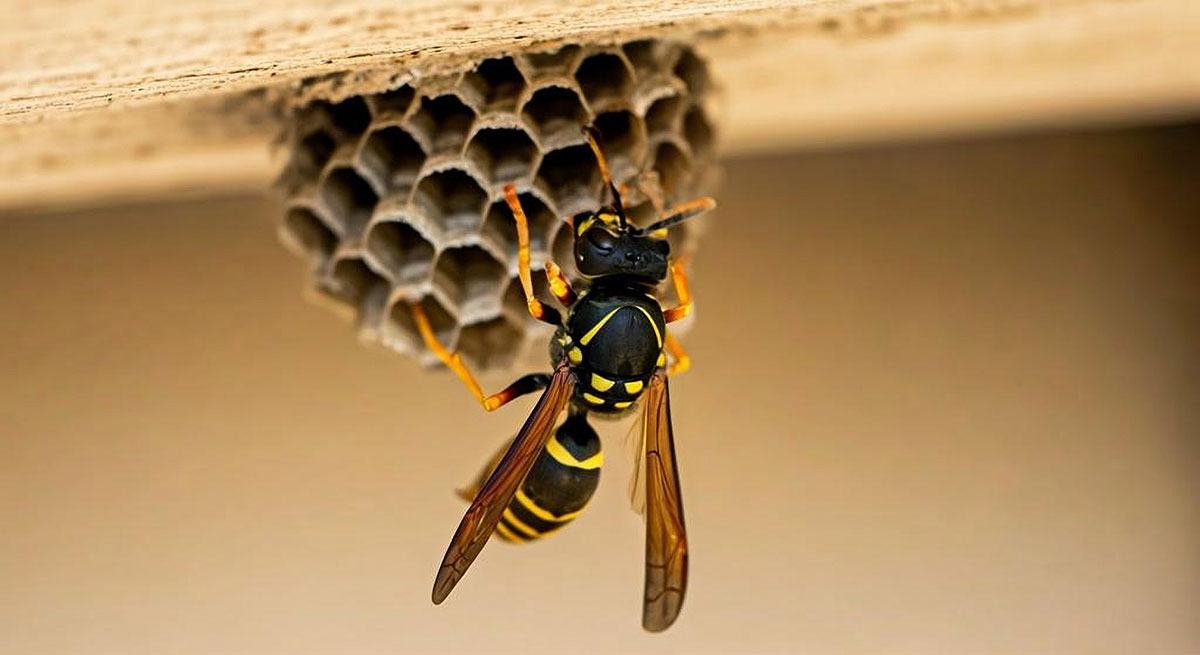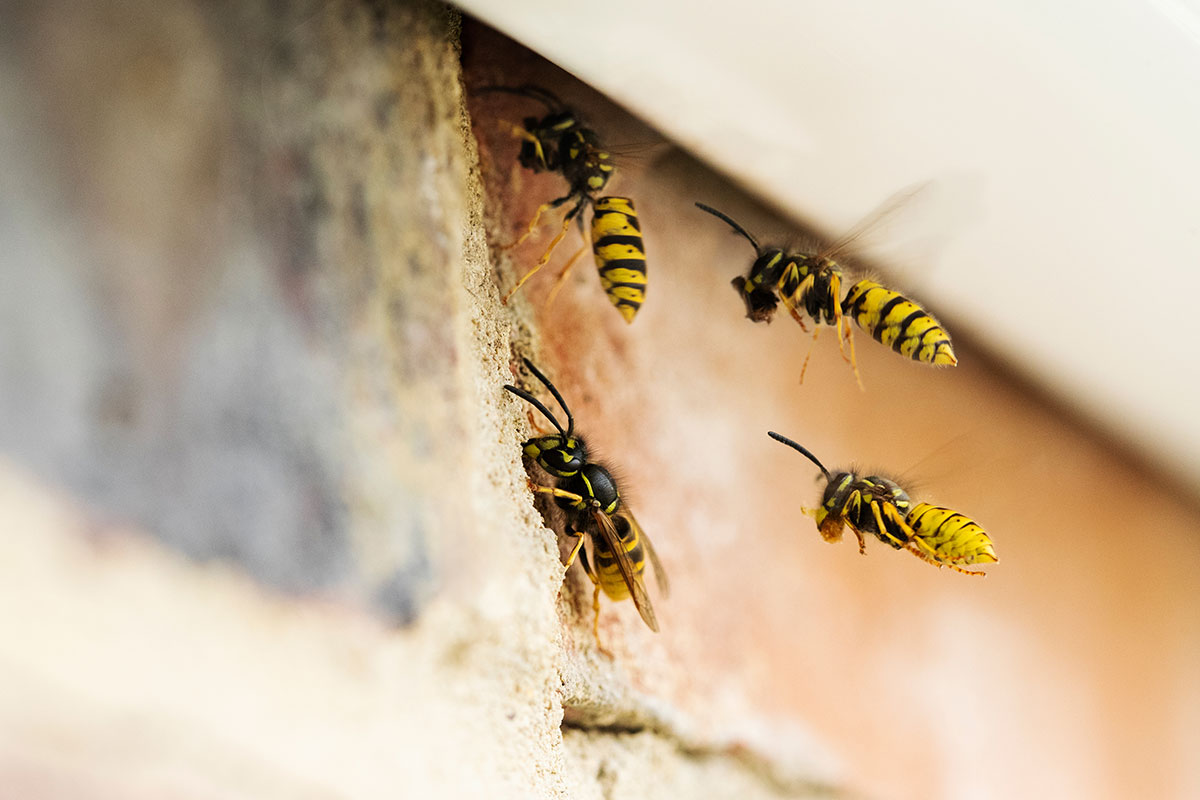Look Up! That Ceiling Stain Might Be a Wasp Nest
Before you shrug it off as a harmless water mark, take a closer look.

It’s late summer. The days are still hot, the evenings buzz with activity, but maybe not the kind of buzz you want.
Then, you start noticing a strange yellowish stain on your ceiling.
That spot might be more than just an eyesore. It could be the sign of an active wasp nest hidden behind your drywall or up in the attic.
As we approach peak wasp season in later summer, here’s how to spot the very first signs of a hidden infestation—and how to know when to call in the professionals.
What Drives Wasps Indoors in Late Summer
In spring, wasp queens emerge from hibernation, starting their quest to build nests and grow their colony. Under the warmth of the summer sun, these colonies grow and grow. By late summer, wasp colonies are at their peak. They’re active, aggressive, and often venture closer to human spaces in search of food, moisture, or shelter.
Even small openings (a crack in the roofline, an attic vent, or an unsealed soffit) can become an invitation for a wasp colony to move in. Once inside, they seek warm, dry, undisturbed spaces: behind ceiling boards, nestled in attic insulation, or hidden within wall voids.
These hidden spaces offer wasps protection from the elements and isolation from predators. Unfortunately for homeowners, they can also lead to structural damage and increase the risk of painful stings.

Keep An Eye Out for Ceiling Stains
Most homeowners associate ceiling stains with water damage. But in some cases, especially in the late summer months, discoloration can point to something more unsettling.
Wasp nests are made of a paper-like material that the insects create by chewing wood and mixing it with saliva. This pulp can soak into drywall or wood, leaving behind yellow-brown patches. Over time, bodily fluids, decaying prey, and waste from the colony can seep through building materials, creating sticky or oily stains.
If it’s a wasp nest, that ceiling stain might be:
- A yellow or brown color with an uneven, sometimes streaky appearance.
- Sticky, oily, or slightly bulging from pressure behind the wall.
- Accompanied by buzzing, rustling, or crackling sounds near the stain (especially in the warm afternoons when wasps are most active).
Be Wary of Other Wasp Warning Signs
Ceiling stains are a common symptom, but just one among many possible signs of a wasp infestation…
- Increased wasp activity: are more wasps than usual flying around rooflines, soffits, chimney openings, or bathroom vents? There could be more lurking just inside.
- Indoor sightings: take note of wasps appearing inside your home, particularly near recessed light fixtures or HVAC vents.
- Uncharacteristic pet behavior: pets often hear or smell things before humans do. If your cat or dog starts fixating on a ceiling corner or barking at a vent, take a closer look.
If you happen to spot any hornets or yellow jackets hanging around, they could also be the culprit. Warning signs like ceiling stains, suspicious noises, and weird pet behavior can also be triggered by hornets and yellow jackets trying to make your home theirs.

What NOT to Do: The Dangers of DIY Pest Control
It’s tempting to take matters into your own hands. A spray can of wasp killer into a vent or knock into the ceiling with a broom can seem like an easy fix. But when nests are hidden, this approach isn’t effective and could put you and your family at serious risk.
If you spot a stain forming on your ceiling, what you don’t want to do is reach out and poke it to inspect what’s going on. The structure could be compromised, not to mention that disturbing a mature wasp nest can trigger an aggressive response, putting you at risk of multiple stings.
On top of the risk of provoking a swarm, anti-wasp sprays could also push the problem deeper, as wasps attempt to retreat further into the structure of your home. They could even venture into ductwork or wall voids, making the infestation even harder to control.
While it might be temping to take a closer look yourself, the best thing to do is simple: leave it alone and call a professional.

Trust Pest-End: Professional Wasp Control Done Right
At Pest-End, we know how to handle stinging insects safely, effectively, and thoroughly.
If you notice strange ceiling stains, suspicious buzzing, or an uptick in stinging pest activity, our team can perform a detailed inspection to determine if there’s a nest lurking behind your walls or above your ceiling.
For a more preventative solution, ask us about WaspGuard: our proactive seasonal service designed to keep your home free of stinging pests. This comprehensive stinging insect control & prevention package includes:
- Two exterior treatments during peak wasp nesting periods in spring and summer.
- Protection against common stingers like Bald Faced Hornets, Paper Wasps, and Yellow Jackets (including ground nests).
- Free re-treatments if wasp activity continues between visits.
- Expert recommendations to improve structural defenses and prevent future nesting.
Keep Your Home A Sting-Free Zone
We’re prepared to put an end to your stinging pest infestation—and with WaspGuard, we’ll help you stay ahead of sneaky overwintering queens in the fall and the ones emerging from hibernation in the spring.
Don’t wait until that stain becomes a swarm. If you suspect stinging pests have made your home their own, contact Pest-End for a comprehensive inspection.



